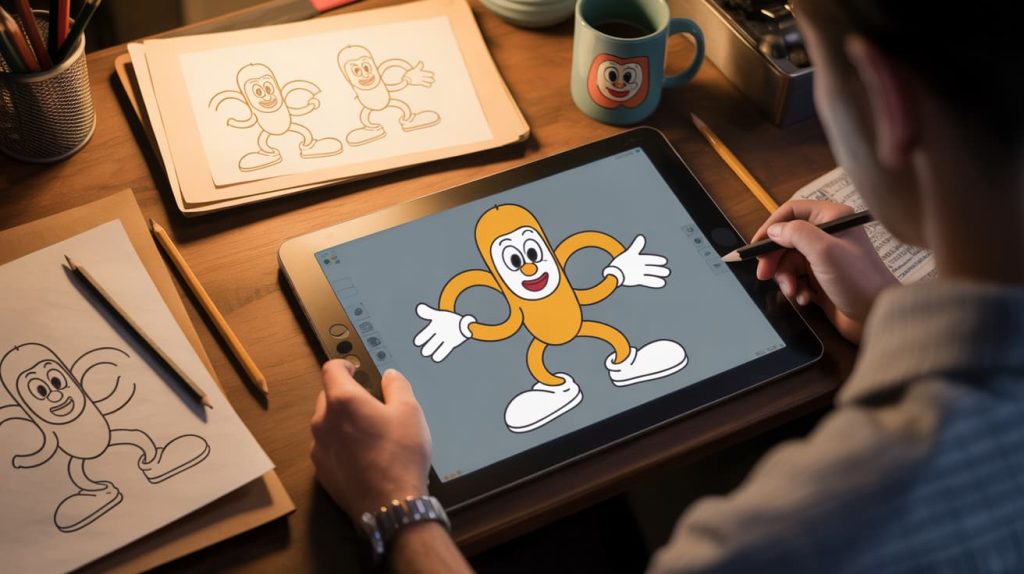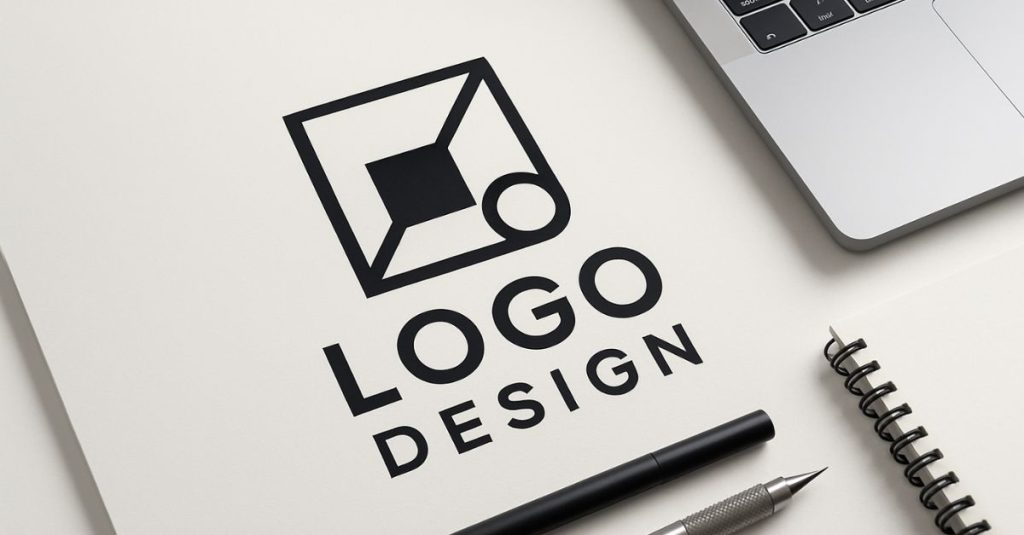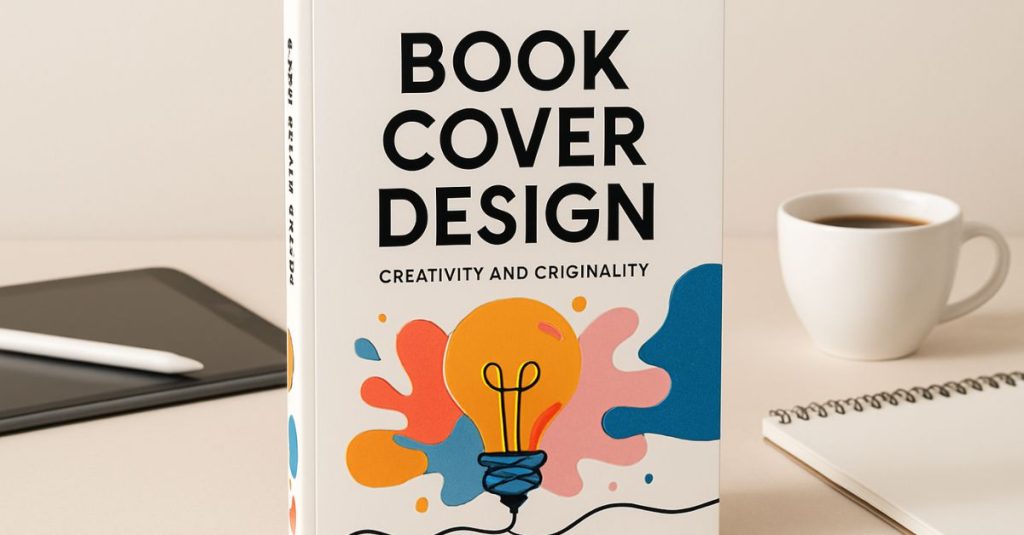There’s something timeless and irresistibly charming about the old-school animation style of the 1920s and 1930s. Think Mickey Mouse, Cuphead, or Betty Boop — characters with bendy arms, big eyes, and endless energy.
This is the rubber hose cartoon style, a design trend making a huge comeback in digital illustration, branding, and animation.
In this post, we’ll explore what makes rubber hose cartoons so iconic, how to design in this style, and why it’s perfect for brands or creators who want to mix nostalgia with fun.
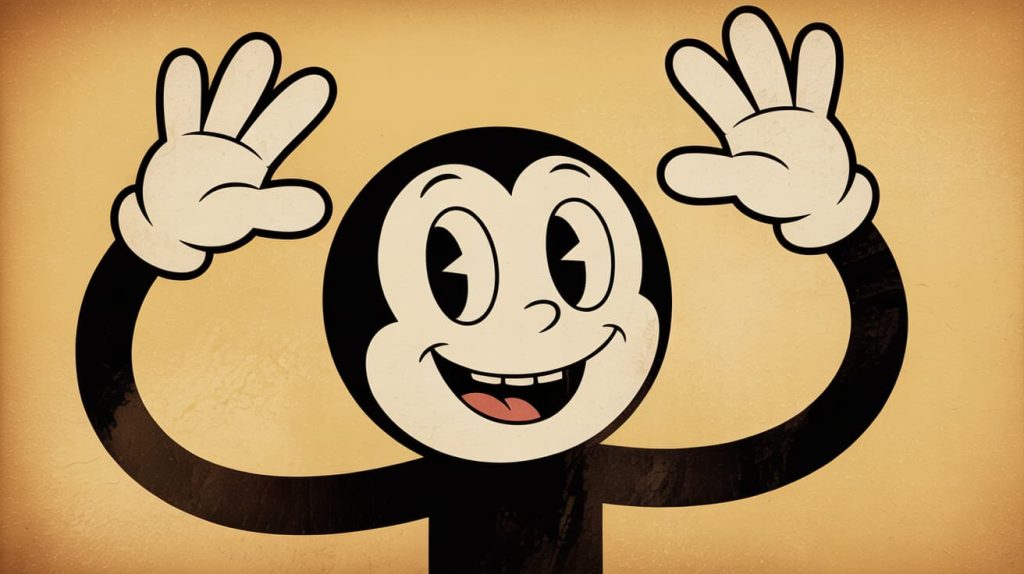
What Is Rubber Hose Cartoon Style?
The rubber hose style is one of the earliest forms of animation design. Its name comes from the way characters’ arms and legs move — as if made from rubber hoses. There are no joints, no sharp angles, just smooth, looping motion that gives the illusion of life and rhythm.
Originally used in black-and-white cartoons, this style’s simplicity made it perfect for the fast-paced, hand-drawn animation of the early 20th century. Today, it’s celebrated for its nostalgic charm and expressive visual language.
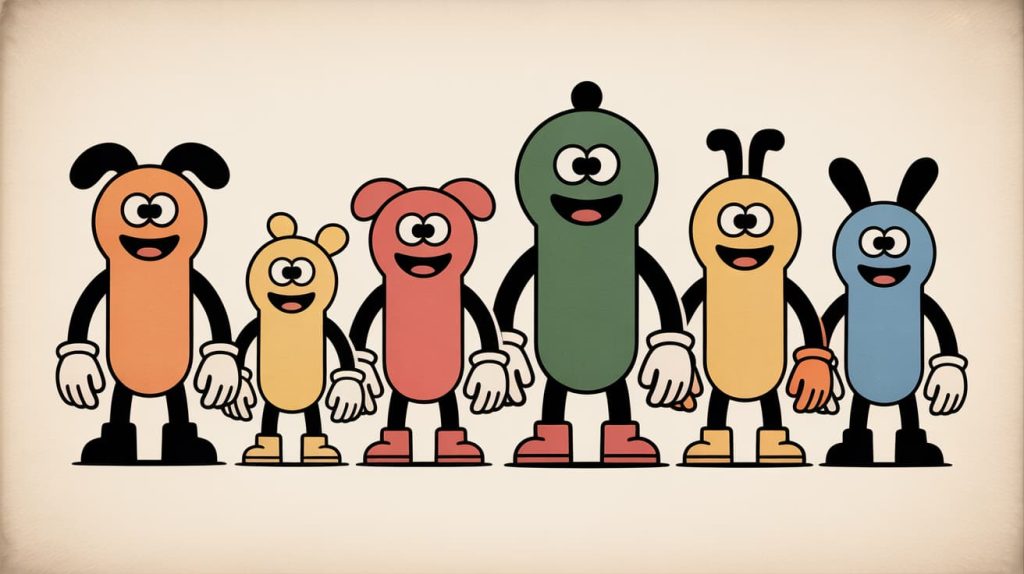
Why the Rubber Hose Style Is Making a Comeback
Modern artists love the rubber hose style for its simplicity, personality, and emotional warmth. It connects with audiences instantly — evoking joy, nostalgia, and humor.
From indie video games to modern animations and even branding projects, this style feels fresh yet familiar. It’s bold, graphic, and full of movement — everything needed to make a design stand out.
💡 Want to create your own retro cartoon character? 👉 Hire a Rubber Hose Cartoon Designer on Fiverr
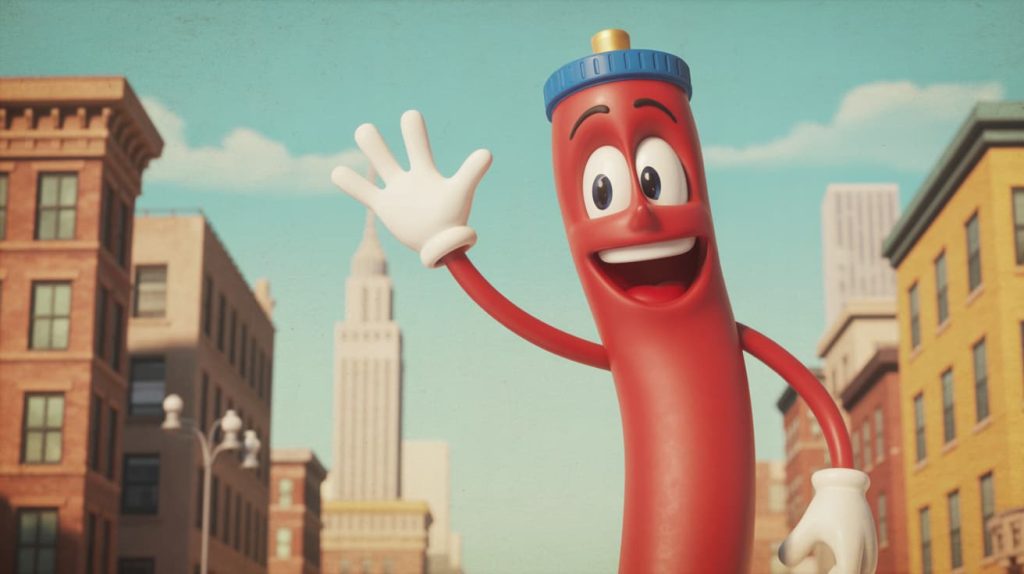
Core Features of Rubber Hose Cartoon Design
To capture the magic of this style, pay attention to a few key artistic elements:
1. Simplified Anatomy
Arms and legs are curvy and jointless — they bend freely like hoses. The body shapes are rounded and flexible, emphasizing smooth motion.
2. Exaggerated Expressions
Big eyes, stretchy mouths, and exaggerated gestures bring these characters to life. Expression drives personality in every frame.
3. Minimal Shading
Early cartoons were mostly black and white, so shading was limited. Stick to bold outlines, simple fills, and strong contrast.
4. Classic Accessories
White gloves, suspenders, bowler hats, and vintage shoes add that signature 1930s touch.
5. Rhythmic Movement
Even in still images, you should feel the bounce. Every pose has flow and energy.
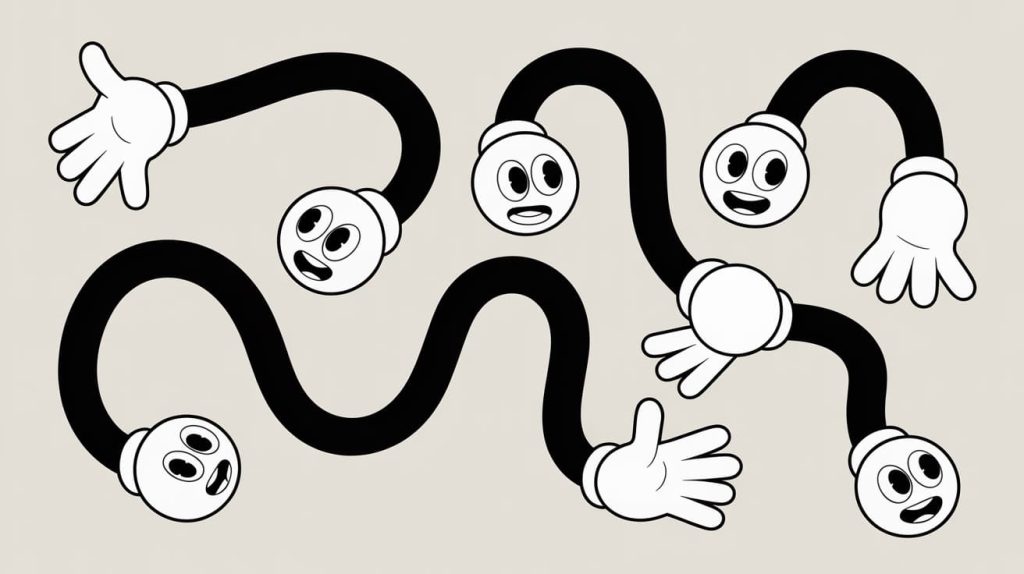
Where Rubber Hose Cartoon Style Is Used Today
This nostalgic art form has found new life in modern creative industries. Here’s where it shines brightest:
- Game Art – Games like Cuphead brought the style back into the spotlight with its beautifully animated characters.
- Music Videos – Artists use this style to tell whimsical, surreal stories.
- Merch Design – Rubber hose mascots look fantastic on stickers, shirts, and posters.
- Branding – Quirky logos and mascots using this style make brands more approachable and memorable.
- Animation & Motion Graphics – It’s a fun, dynamic choice for animated explainers or social media videos.
💡 Bring a nostalgic mascot to life for your brand! 👉 Find a Professional Cartoon Illustrator on Fiverr
How to Create a Rubber Hose Cartoon Character
Here’s a step-by-step overview for illustrators or anyone curious about the process:
- Start with Simple Shapes
Begin your design using circles and tubes — everything should feel smooth and bouncy. - Add Personality Through Pose
Give your character a strong silhouette. Even without details, the pose should show emotion. - Define Expression
Exaggerate! Wide smiles, droopy eyes, and funny eyebrows sell the cartoon mood. - Line Work & Contrast
Use bold black outlines and limited color palettes — classic cream, gray, or sepia tones. - Final Touches
Add grain or halftone textures to enhance the vintage effect.
💡 Want your own 1930s-style cartoon character for branding or merchandise? 👉 Hire a Vintage Cartoon Designer Today
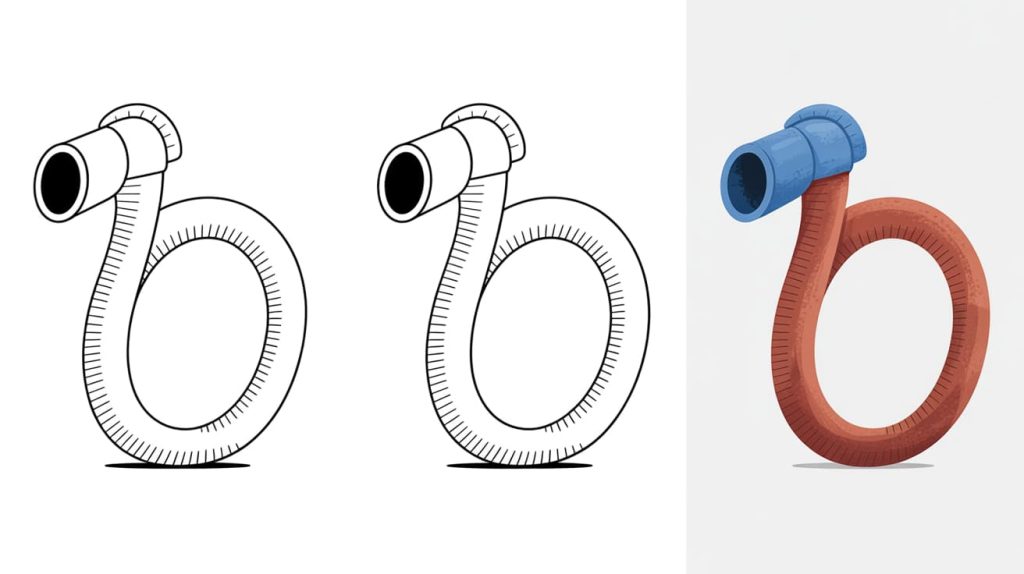
Tips for Designing in Rubber Hose Style
- Keep proportions simple and rounded — avoid sharp or realistic anatomy.
- Use limited colors to mimic old film palettes.
- Add rhythm to your lines — even static drawings should feel like they’re moving.
- Study classic animation frames for pose inspiration.
- Don’t overcomplicate backgrounds — focus on character storytelling.
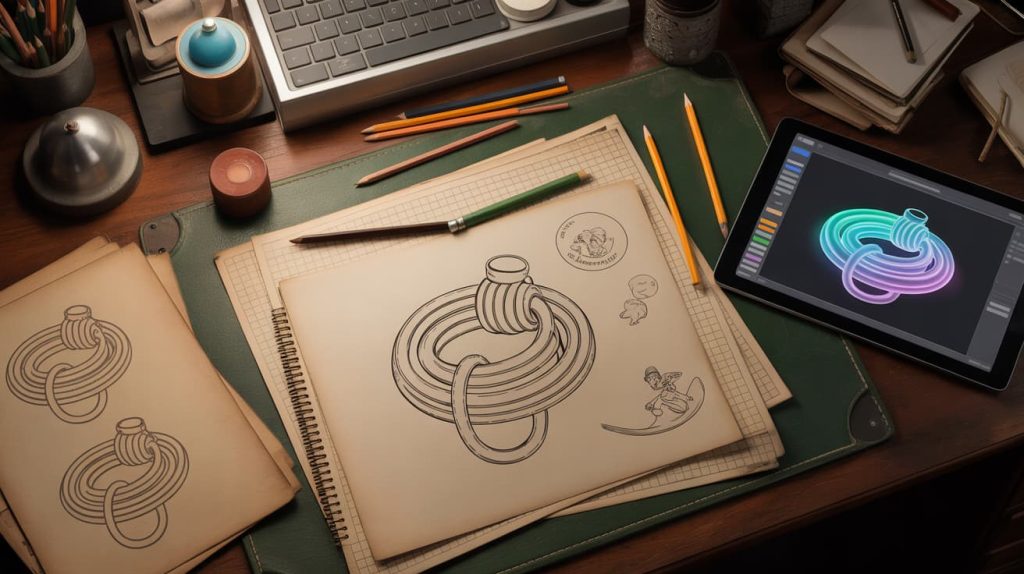
Why This Style Still Captures Hearts
The rubber hose cartoon style is a reminder that design doesn’t have to be complex to be powerful. Its simplicity, charm, and humor continue to inspire new generations of artists and brands.
By combining retro aesthetics with modern tools, designers today are breathing new life into one of the most beloved eras of animation history.
💡 Ready to add a touch of vintage charm to your brand or art project? 👉 Work with a Rubber Hose Cartoon Designer Now
